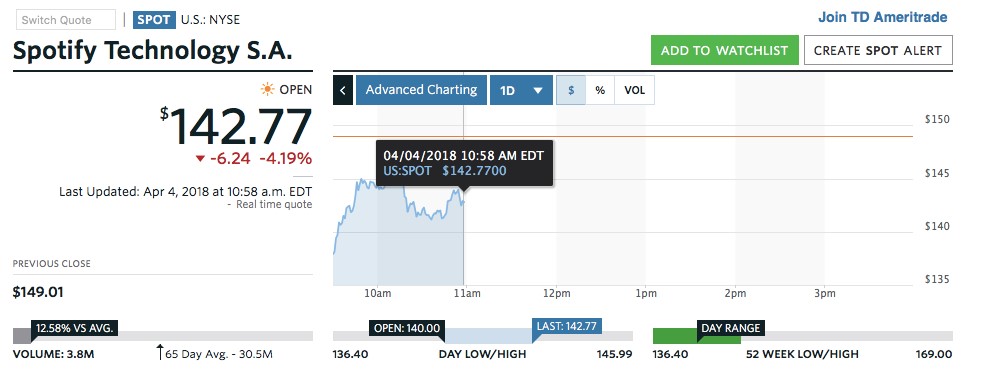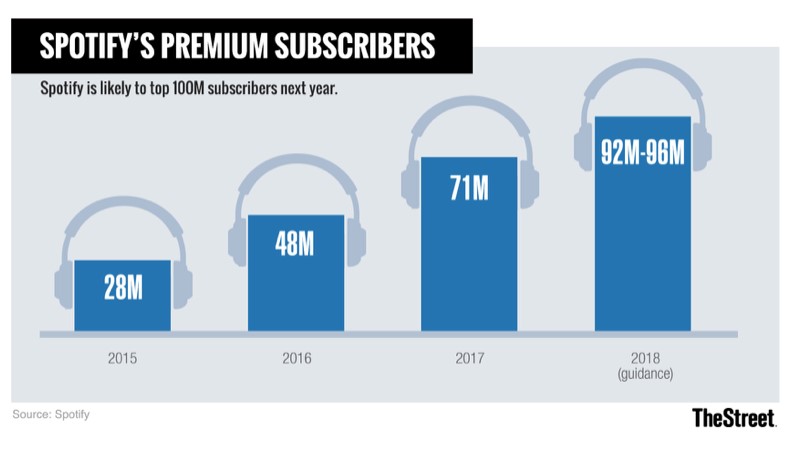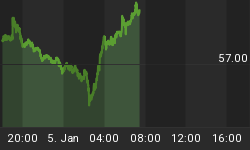The first day of trading Tuesday for Spotify, the newly listed ‘savior’ of the music industry, was a stellar one, but it’s lost some of its traction in Tuesday trading as the market decides whether it can justify a mind-blowing $30-billion valuation.
On Wednesday morning, Spotify (NYSE:SPOT) opened at $140 per share, having lost 8.5 percent on its Tuesday close, but as of late morning trading it was still $10 above its reference price of $132, which was set on Monday.

(Click to enlarge)
It was a good first day, but it wasn’t brilliant when you look at listing-day trading volume for other IPOs:

(Click to enlarge)
The question is whether the drop is just moving with the rest of the declining market, or whether investors are hesitating over Spotify’s prospects and feeling gun shy with overvalued stocks in the wake of the tech sell-off in March.
Nothing about Spotify has been orthodox from the beginning, but that’s what’s attracted investors, along with healthy growth prospects.
Spotify filed to go public directly, not through an initial public offering, listing its shares directly on the NYSE and avoiding the average $300 million in IPO costs.
In March, there was talk of a potential $23-billion valuation—and even then, there were questions. Now, it’s a $30-billion valuation, and no one’s quite sure if Spotify can live up to this.
It’s not easy to value Spotify, and what investors have been looking at as most promising right now are new deals with three major record labels. Related: What Cars Do Smart People Drive?
Spotify started offering is music streaming service in 2008, and now has almost 160 million monthly active users. Globally, it boasts 71 billion paid subscribers. But it lost $1.5 billion last year, while recording revenue of nearly $5 billion. Operating losses also grew from 2016 to 2017. In 2017 they were $461.3 million; in 2016, $425.9 million.
Subscribers are growing at a rate of 46 percent year-over year, and the timing of the public listing was critical: Spotify just reworked contracts with major record labels that will improve its bottom line by paying record labels less in fees for the music its users stream.
And the company says it’s on track to surpass the 100-million subscriber mark in 2019.

(Click to enlarge)
In the meantime, Asian tech giants like Tencent and Sony should be pleased with the Spotify’s Wall Street showing so far. Both are major backers of the company, with Tencent holding a 7.5-percent stake valued today at around $2 billion. And part of Spotify’s $1.5-billion loss last year was due to a share swap deal in December in which they took minority stakes in each other ahead of the NYSE SPOT listing.
Related: The Most Common Market Manipulation Techniques
This is enough to make the loss more easily digestible to investors, as indicated by SPOT’s Wall Street showing in the first two days of trading.
Whether it will be enough in the long run, no one’s sure.
While the new record deals will help boost Spotify’s margins, the company doesn’t consider this its primary profit strategy. Instead of focusing on better record label deals, it says it using massive data to reach and deliver services that would help artists attract more fans and communicate with them to keep them.
By Michael Scott for Safehaven.com
More Top Reads From Safehaven.com:

















